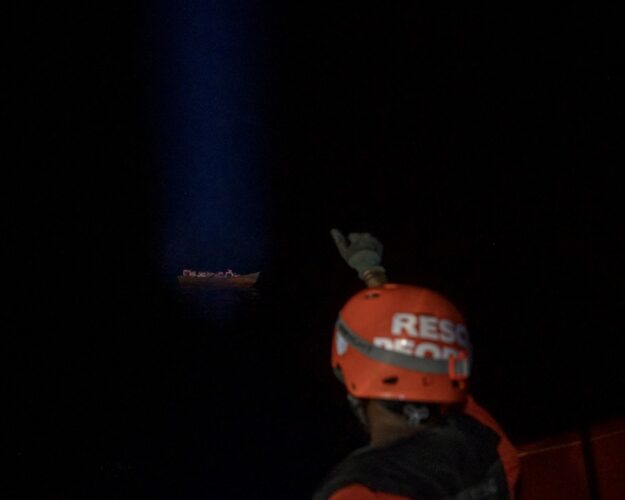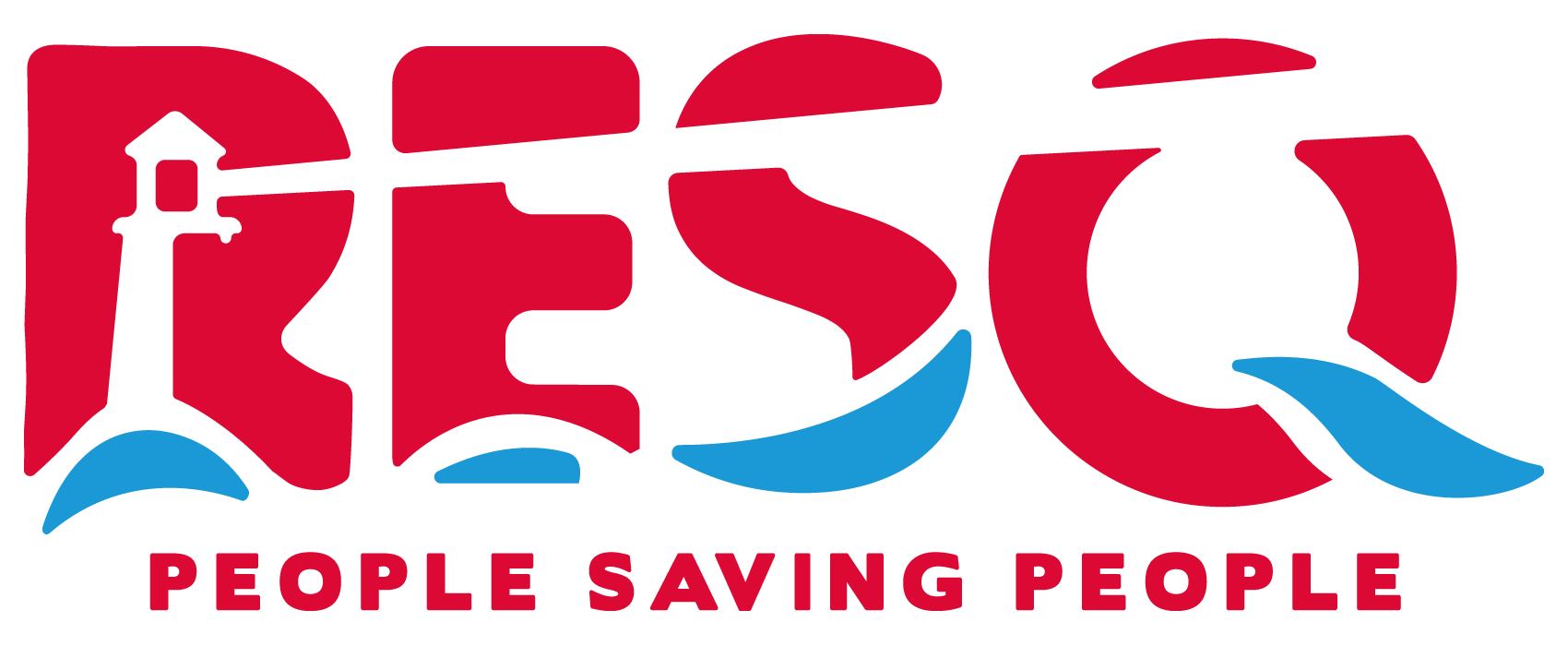
On September 11th we set sail from Syracuse, Sicily, and headed South; while the ResQ People was navigating we put our RHIBs (the Rigid Hull Inflatable Boats we use for the rescue) in the water to do some more training at high sea. Before we set sail we had two options: the search and rescue area on the Libyan route or on the Tunisian route. The frightening amount of reports on the Tunisian route – and this year’s lethal novelty, iron boats – made us choose: we are going South-West.
We arrived in the SAR area on Wednesday. On channel 16, the radio channel for emergencies at sea, it was a continuous “Mayday relay”: other ships, Pilotes Volontaires and Sea-Watch aircraft and Frontex’s Osprey2 aircraft were reporting dozens of distress calls for boats in critical conditions. We headed for two cases reported by Colibrì Pilotes Volontaires’ search aircraft; the Maritime Rescue Coordination Center (MRCC) invited us to proceed to rescue any iron boats we encountered in our area, up to the maximum capacity of our vessel.
At 8:25 p.m. from the upper deck, where we do observation with binoculars, Samir spotted a small light going on and off: someone was trying to get our attention. We immediately launched our RHIBs – named Theresa and Lisa Fittko – with the rescue team on board: Samir, David and Madi on Theresa, while Minke, Alex and Cecilia boarded Fittko.
The iron boats, that appeared this year on the Tunisian route, are death traps: the welds break and they start taking on water, but all it takes is for a wave to get inside to compromise their stability. And when it sinks, it sinks: while a dinghy that deflates – or a wooden boat that capsizes – remains afloat and offers a chance to hang on (a slim hope of staying alive until rescue arrives…), the iron boat goes down like a rock.
The first rescue was an iron boat, in relatively fair condition, as good as a death trap can be; it had been three days at sea: you can imagine the condition of the people on board. We proceeded to rescue and brought everyone to the ship: they were so exhausted that as soon as they were hoisted onto the ResQ People, they fell into the arms of the volunteers who were waiting for them on deck.
As soon as we finished boarding all 49, two hours after the rescue began, the RHIBs went back to the iron boat to sink it (it’s a hazard to navigation)… and that’s when it happened.
“Come back, I repeat, come back here immediately, I mean now! Now! Top speed!” shouted Kim over the radio. From the blackness of the night another iron boat had materialized next to our ship, the people on board were screaming in despair: they were quickly sinking. The hull on one side was about four inches out of the water, while on the other side was already out of sight, so full of water was it. It was a matter of very few minutes: if our RHIBs had not already been in the water, they would have all died.
Fittko was the first to arrive on scene and began the stabilization – calming people down, trying to get them to stay still to gain precious seconds, then handing out life jackets – while Theresa ran to get the centifloat, the long orange inflatable device that is used when there are lots of people in the water. And then the boat sank, and everyone went overboard.
It was the darkest night, no moonlight to help us, just a bunch of people in a race against time – and death. Throwing every jacket we had into the water, and using the centifloat, we managed to rescue 47 people from the water. For one woman, unfortunately, there was nothing we could do: we saw her dead body right away, but of course we took care of the living first, those who still had hope. And we rescued them, first on the RHIBs and then on the main vessel ResQ People. The RHIB Lisa Fittko pulled up from the water a little girl shivering with cold, twelve years old and terror in her eyes, she had already drunk salt water. “Are you all right? ” Cecilia asked her as the RHIB raced toward the ship, “My grandmother is dead,” was the immediate response.
When we finished securing all the shipwrecked people aboard the ship, the RHIBs remained in the water: we went to search for Grandma’s body, to give comfort to her family, so that she could have a proper burial. It was not easy, in the dark and the swell, but we made it. We were glad to be able to do at least that much for her: to bring her ashore, treating her with all possible respect.
At 1:30 a.m. the rescue team also returned on board. The authorities immediately assigned us to the port of Trapani and we started sailing north, but the next morning we again stopped to assist, as requested by the Italian Coast Guard, a boat in trouble: we remained on the scene until their vessel arrived (these women and men are doing an incredible job at sea. To be able to help is our duty, but it is also a sincere pleasure).
We sailed to Trapani taking care of the 96 survivors and on Friday they came ashore. The Conventions say that a rescue ends with landing in a safe port: our rescue, therefore, ended at 6:12 p.m., when the last of our shipwrecked people set foot on the dock.
If the ship had not been there, what would have happened to the 49 people on the first boat? We cannot say for sure. But we do know for sure what would have happened to the 47 people on the second one: they would have all drowned. We snatched them from death on the thread of seconds, not minutes.
And do you know who it is that allowed us to be there? All of you who support ResQ. Those who donated when they could to those who adopted the ship, contributing every month on a regular basis; the volunteers and shore crews from all over Italy, and beyond, who dedicate time and resources to the growth of ResQ; the project partners like Doctors of the World Italy, who support us in all the medical and health part of the ship and the missions; the Entities, the Foundations, some realities of the Catholic Church who were not afraid to expose themselves by supporting the rescue at sea.
You are the hands that rescued these people from the water.
Now we are doing everything to get going again right away, because we need every ship in the search and rescue zone. But we can’t do it alone, so please, if you can, make a donation now to enable us to support the cost of the mission. If you have already done so recently, if you can’t, talk about ResQ to those you know and invite them to support the upcoming missions. These days, on that route, your donations can literally make the difference between life and death.
